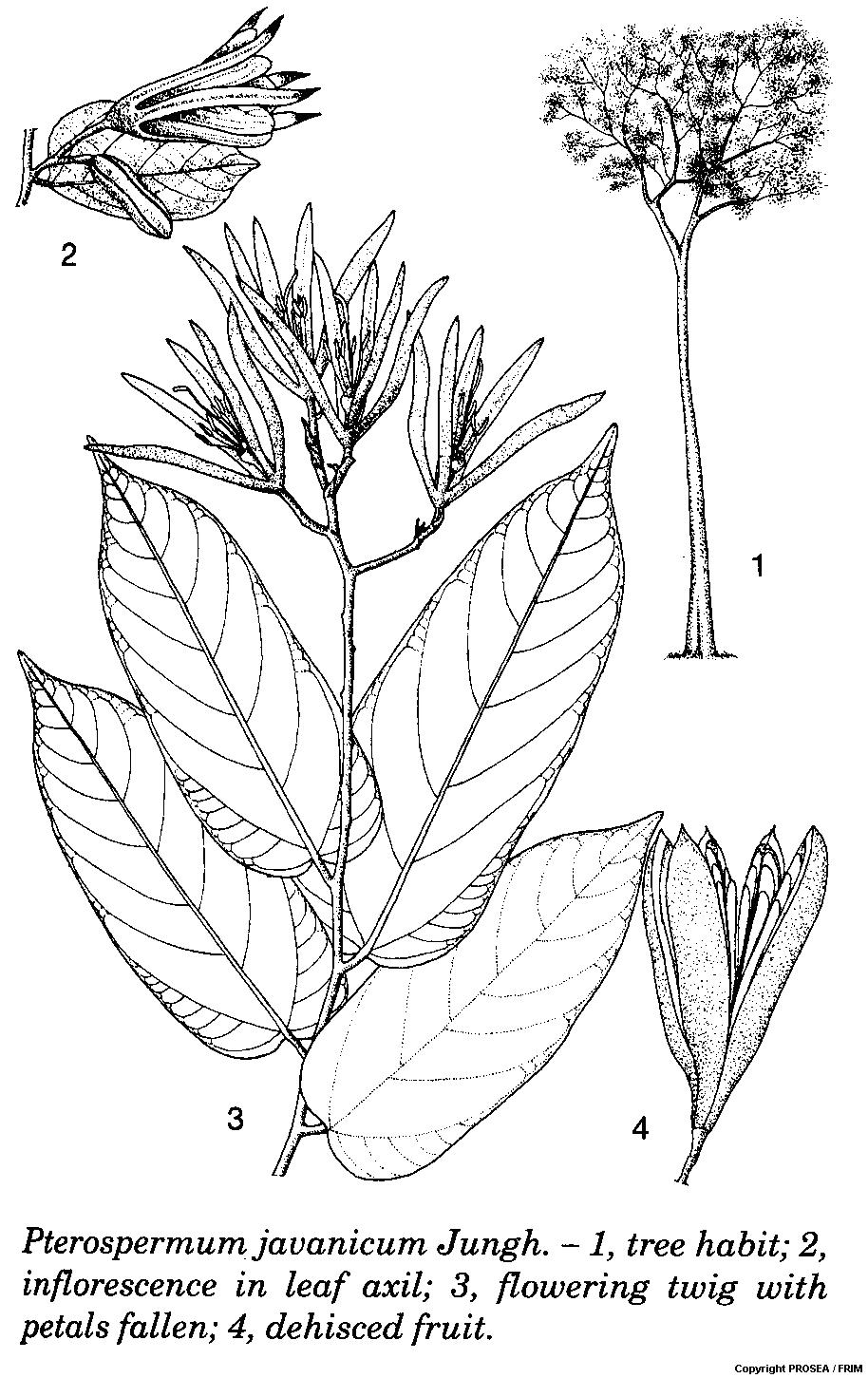Pterospermum javanicum Jungh.
Family
Sterculiaceae
Synonyms
Pterospermum blumeanum Korth.
Vernacular Names
| Malaysia | Bayur, letop-letop, melerang (Peninsular). |
| Indonesia | Bayur (General), wadang (Java). |
| Myanmar |
Nwa-labyin. |
Geographical Distributions
Pterospermum javanicum is distributed in Burma (Myanmar), Peninsular Malaysia, Sumatra, Java, Borneo, the Lesser Sunda Islands and the Moluccas.
Description
Pterospermum javanicum is a medium-sized to large tree that can grow up to 45 m tall. The bole is short or crooked but sometimes fairly straight and is branchless for up to 30 m. It is often fluted and measuring up to 100(-120) cm in diametre. The buttresses are usually present, short to stout (up to 2 m high) and rounded. The surface of the bark is smooth, distantly scaly or shallowly fissured, with lenticels, pale brown to grey or sometimes dark brown. The inner bark is fibrous, and red or red-brown with white streaks. The crown usually becomes somewhat flattened and coppery.
The leaves are arranged alternately, simple, often unequal at the base (often peltate in young trees), entire, wavy or toothed and densely hairy below. The stipules are present.
The flowers are solitary or up to 3 together in the leaf axils or pseudoterminal. They are generally large and showy, bisexual, 5-merous and white or yellow. The tubular sepal appears with cohering or free sepals. The petals are strap-shaped with short androgynophore. The stamens are in 5 bundles of 3 and 5 staminodes. The ovary is superior, 5-locular with many ovules in each cell and with slender style.
The fruit is an oblong, woody and many-seeded capsule. The seed is flattened and winged on one side. Seedling is with epigeal germination. The emergent cotyledons are leafy. The hypocotyl is elongated where the leaves are folded lengthwise and all are arranged spirally.
Ecology / Cultivation
Pterospermum javanicum occurs scattered in primary forests or locally abundantly in secondary forests and especially on river banks, often in alluvial soils, up to 1400 m altitude.
Line Drawing / Photograph

References
- Plant Resources of South-East Asia No. 5(3): Timber trees: Lesser-known timbers.



